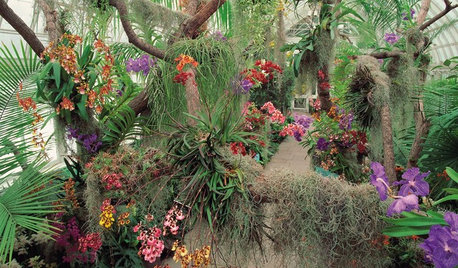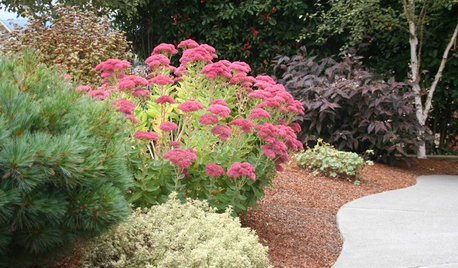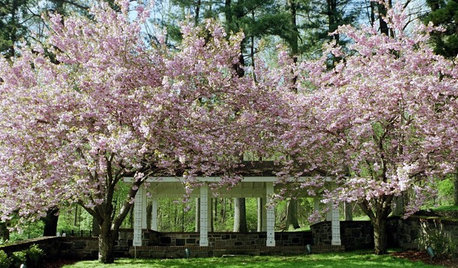When to switch from N. fert to blooming fert?
bob123how
16 years ago
Related Stories

FLOWERSSee the Amazing Orchids Unfolding at a New York Garden Show
Get an eyeful of awe-inspiring orchids in incredible colors and learn how to keep one happily blooming at home
Full Story
HOUSEPLANTS8 Essentials for Healthy Indoor Plants
Houseplants add so much to our homes — and can thrive when grown in the right conditions. Keep these tips in mind
Full Story
GARDENING GUIDESPacific Northwest Gardener's August Checklist
Deadheading perennials, cutting raspberry canes and preparing for the onion harvest keeps Northwest gardeners busy in August
Full Story
FEEL-GOOD HOME10 Ways to Fight Pollen at Home
Keep sneezing and stuffiness to a minimum by making your house as pollen free as possible
Full Story
GARDENING GUIDESGarden-Friendly Native Alternatives to Overplanted Exotics
There are lots of gorgeous, wildlife-friendly native plants ready to make an appearance in your garden
Full Story
GARDENING FOR BUTTERFLIESBe a Butterfly Savior — Garden for the Monarchs
Keep hope, beauty and kindness alive in the landscape by providing a refuge for these threatened enchanters
Full Story
LIFEYou Said It: ‘Know Thyself’ and Other Houzz Quotables
Design advice, inspiration and observations that struck a chord this week
Full Story
GARDENING GUIDES8 Pickable Plants for Fall Centerpieces
Cut flowers and branches make for seasonal arrangements both easy and lovely. Grow these in the garden for the look and feel of fall
Full Story
GARDENING GUIDESHow to Get Your Prairie On
Have a field day with your landscape, even if you've got just a few modern containers on a paved path
Full Story
LIFEHard Winter? 9 Ways to Battle Cabin Fever
We know a lot of you are trapped where it just won’t stop snowing. Here are some ways to survive
Full Story







wetfeet101b
arthurm
Related Professionals
Havre de Grace Landscape Architects & Landscape Designers · Richmond Heights Landscape Architects & Landscape Designers · River Forest Landscape Architects & Landscape Designers · Beverly Hills Landscape Contractors · Cockeysville Landscape Contractors · Fairfield Landscape Contractors · Newberg Landscape Contractors · Pompano Beach Landscape Contractors · Arlington General Contractors · Bloomington General Contractors · Montebello General Contractors · Mount Vernon General Contractors · Seal Beach General Contractors · Tabernacle General Contractors · Watertown General Contractorsorganic_kermit
clintdawley
mrbreeze
aerides
bob123howOriginal Author
wetfeet101b
ice_cream_lover
mrbreeze
orchid126